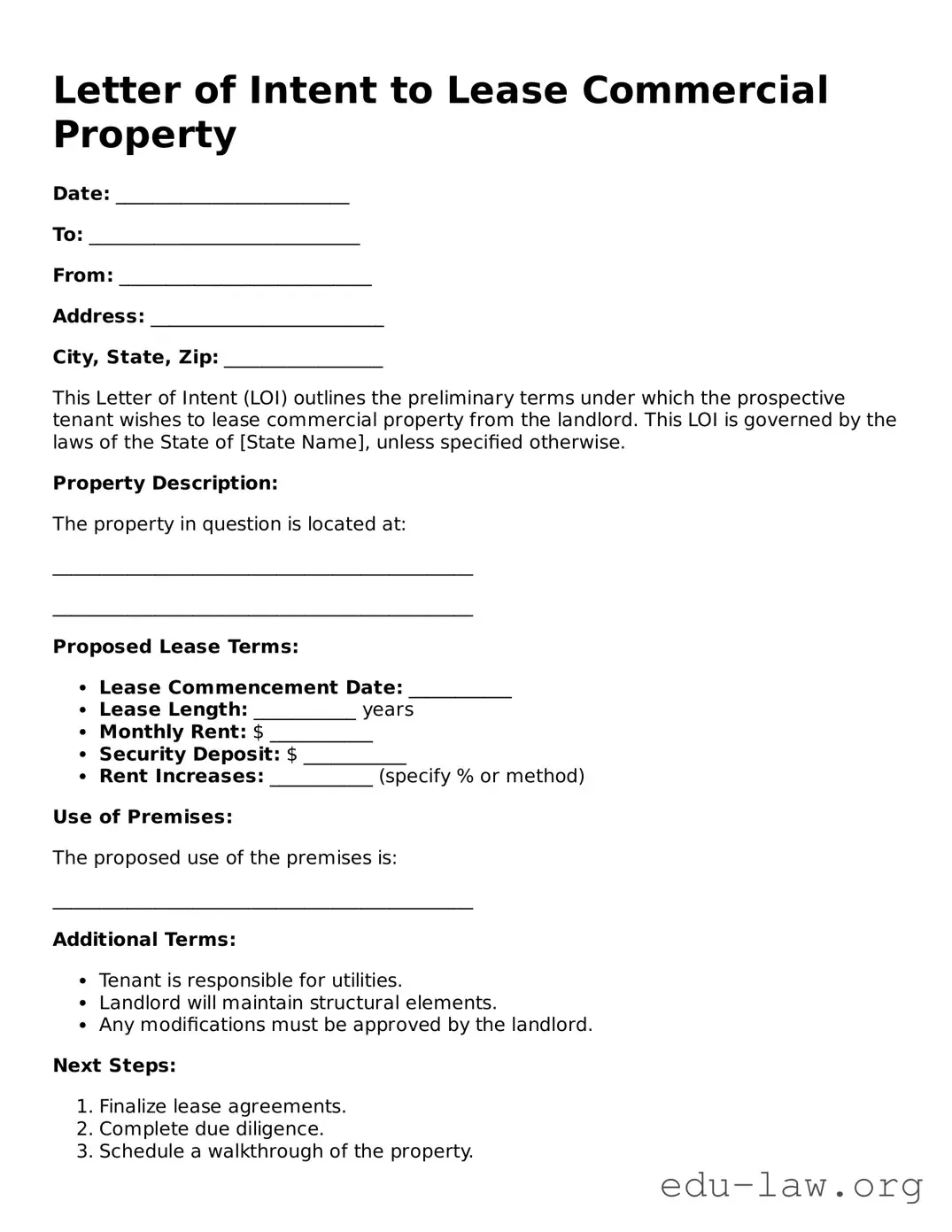Letter of Intent to Lease Commercial Property
Date: _________________________
To: _____________________________
From: ___________________________
Address: _________________________
City, State, Zip: _________________
This Letter of Intent (LOI) outlines the preliminary terms under which the prospective tenant wishes to lease commercial property from the landlord. This LOI is governed by the laws of the State of [State Name], unless specified otherwise.
Property Description:
The property in question is located at:
_____________________________________________
_____________________________________________
Proposed Lease Terms:
- Lease Commencement Date: ___________
- Lease Length: ___________ years
- Monthly Rent: $ ___________
- Security Deposit: $ ___________
- Rent Increases: ___________ (specify % or method)
Use of Premises:
The proposed use of the premises is:
_____________________________________________
Additional Terms:
- Tenant is responsible for utilities.
- Landlord will maintain structural elements.
- Any modifications must be approved by the landlord.
Next Steps:
- Finalize lease agreements.
- Complete due diligence.
- Schedule a walkthrough of the property.
This Letter of Intent is intended as a summary of our discussions and reflects the intent of both parties to enter into a lease agreement. It is not a legally binding document but serves as a basis for future negotiation.
Should you have any questions or wish to amend any part of this LOI, please do not hesitate to reach out at your earliest convenience. We look forward to moving ahead.
Sincerely,
____________________________________
Signed: _____________________________
Date: _____________________________
